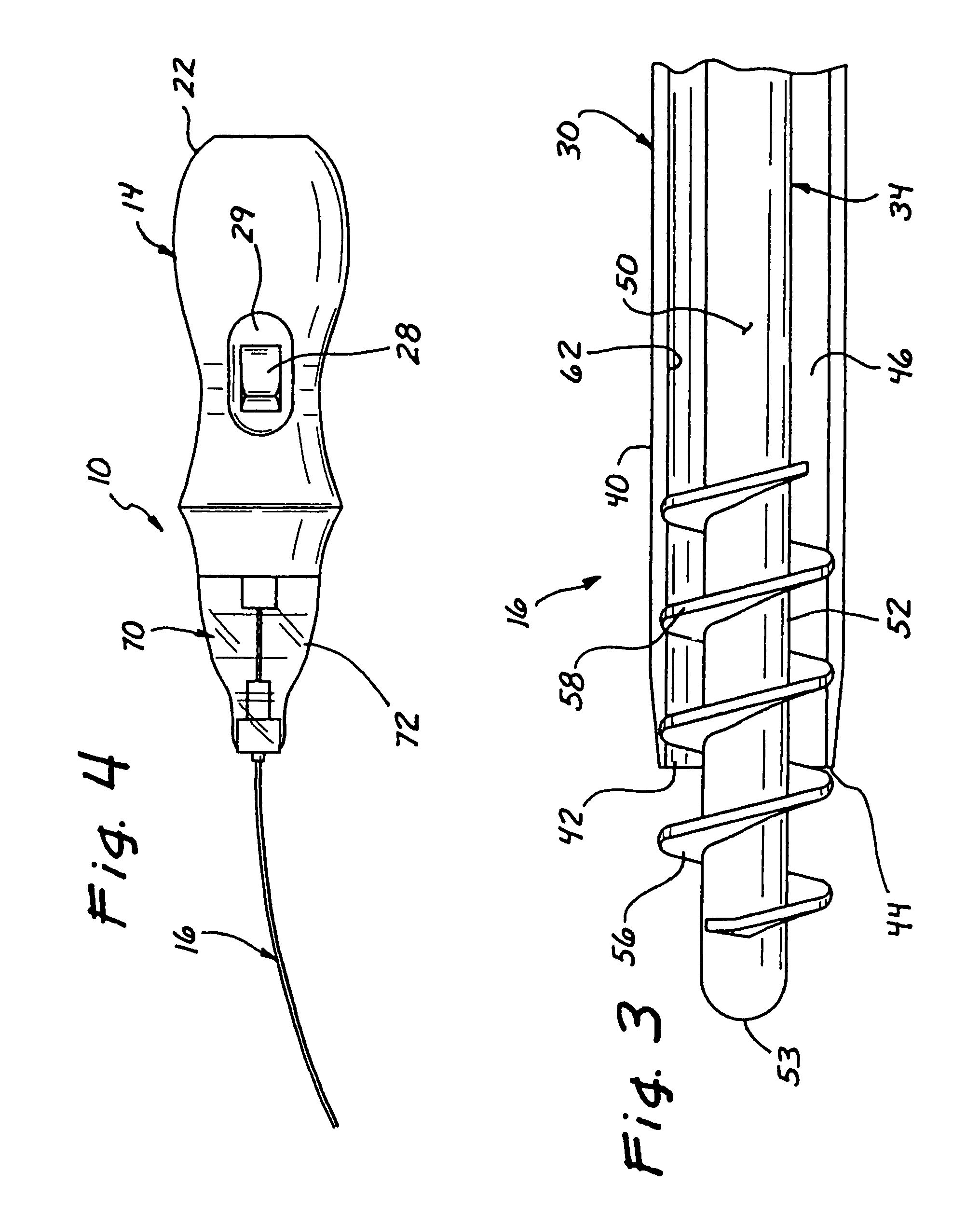Micro-invasive device
a micro-invasive and device technology, applied in the field of medical devices, can solve the problems of difficult to determine if pre-palpable breast abnormalities are malignant, difficult to determine if they are malignant, and expensive, and the results are not good,
- Summary
- Abstract
- Description
- Claims
- Application Information
AI Technical Summary
Benefits of technology
Problems solved by technology
Method used
Image
Examples
Embodiment Construction
[0043]Turning now to FIGS. 1 and 2, a micro-invasive tissue removal apparatus for removing tissue or other material from a breast, in accordance with the present invention is shown generally at 10. The apparatus 10 generally comprises a handpiece 14 and a tissue removal mechanism 16 to be described in detail hereinafter.
[0044]The handpiece 14 is preferably sized and contoured to fit comfortably within a palm of a surgeon, and includes, for example, a molded plastic housing 22. As shown in FIG. 2, the housing 22 of the handpiece 14 encloses a small motor 24 and a power supply, for example, a 9 volt battery 26 for driving the tissue removal mechanism 16. Suitable electrical connectors 27 are provided. For convenient, one handed operation, an ON / OFF switch 28 is preferably provided on a recessed, lateral portion 29 of the housing 22.
[0045]Turning now as well to FIG. 3, the tissue removal mechanism 16 generally includes a cannula 30 and a rotatable element 34 disposed therein. As shown ...
PUM
 Login to View More
Login to View More Abstract
Description
Claims
Application Information
 Login to View More
Login to View More - R&D
- Intellectual Property
- Life Sciences
- Materials
- Tech Scout
- Unparalleled Data Quality
- Higher Quality Content
- 60% Fewer Hallucinations
Browse by: Latest US Patents, China's latest patents, Technical Efficacy Thesaurus, Application Domain, Technology Topic, Popular Technical Reports.
© 2025 PatSnap. All rights reserved.Legal|Privacy policy|Modern Slavery Act Transparency Statement|Sitemap|About US| Contact US: help@patsnap.com



